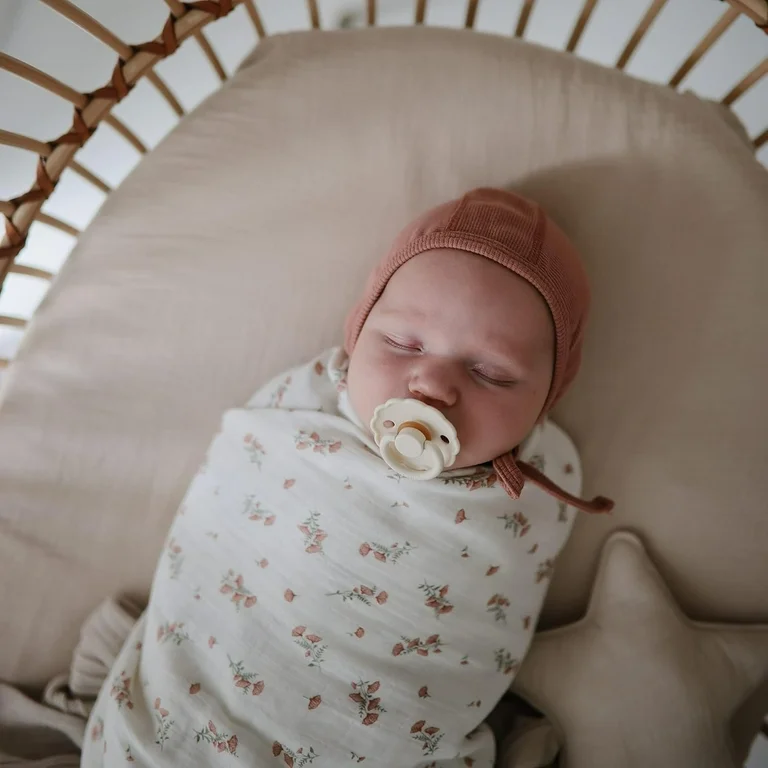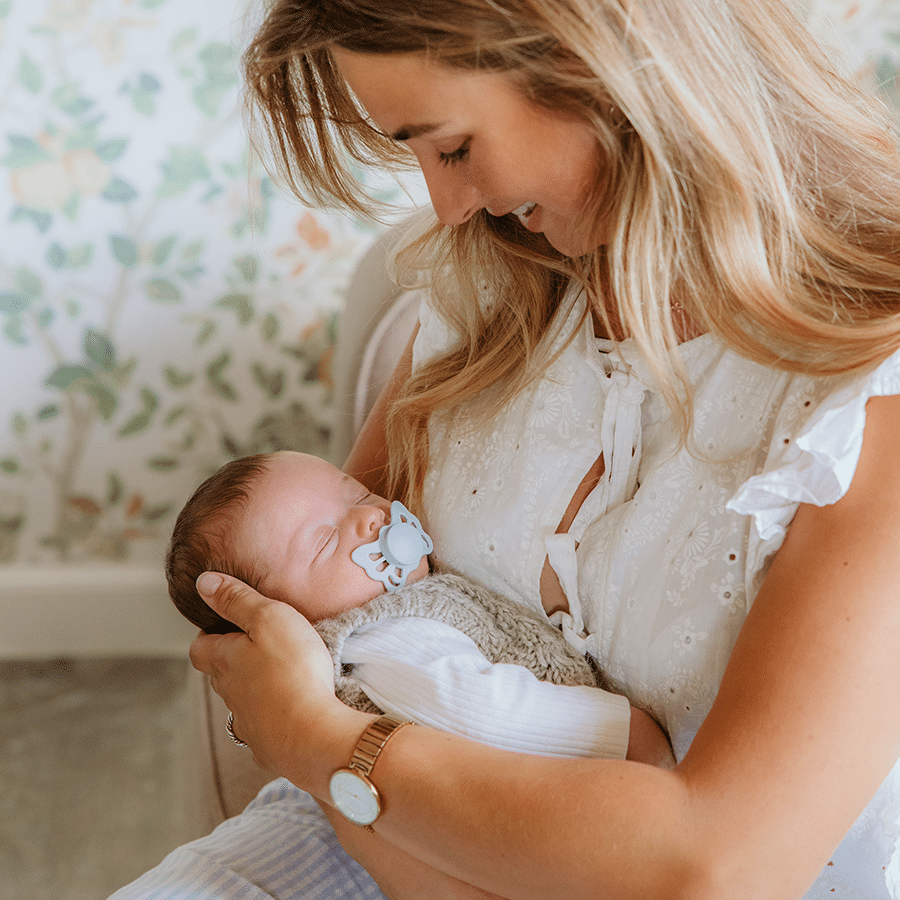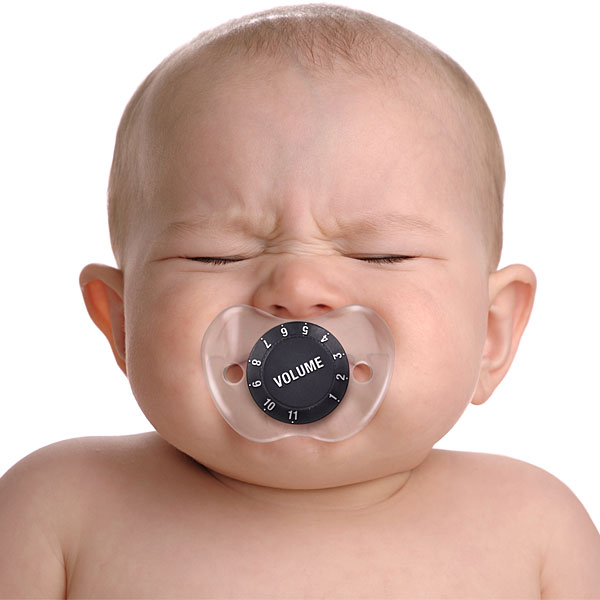Introduction to Pacifier Use in Newborns
Can a newborn sleep with a pacifier? Newborns have a strong sucking reflex that often helps them feel comforted and secure. A pacifier, also known as a soother or dummy, can be a key tool for soothing babies. Parents may wonder, can a newborn sleep with a pacifier? The short answer is yes, but it’s essential to understand the proper ways to use it.

Using a pacifier can help settle a newborn to sleep, reduce crying, and offer a temporary distraction. It also has benefits related to sleep safety, such as the potential to lower the risk of Sudden Infant Death Syndrome (SIDS). However, pacifier use in newborns must be approached with caution.
As a new parent, it’s crucial to learn the benefits and safety measures when introducing a pacifier to your newborn. Ensuring the pacifier’s cleanliness, knowing when and how often to offer it, and understanding when to wean your child off the pacifier are all key aspects of safe usage. In the following sections, we will dive into the best practices for pacifier use in newborns to ensure your little one’s safety and comfort.
The Benefits of Using a Pacifier for Sleep
Many parents ponder whether a newborn can sleep with a pacifier. The use of a pacifier during sleep brings several advantages that support a newborn’s overall well-being.
- Encourages Sleep: A pacifier’s sucking action can mimic the comfort of nursing, promoting a more restful sleep.
- Soothes and Calms: It can pacify a fussy baby, helping them to fall asleep with less effort.
- Reduces SIDS Risk: Pacifiers are linked to a lower risk of SIDS, offering an extra layer of protection during sleep.
- Provides Pain Relief: During minor procedures, a pacifier can reduce discomfort and distress for your newborn.
- Helps with Air Travel: The sucking action helps relieve ear pressure during flights, keeping your baby more comfortable.
Bear in mind that while the benefits are significant, it’s also critical to use pacifiers judiciously and always adhere to safety guidelines to avoid potential drawbacks.

Understanding the Safety Concerns
While pacifiers offer considerable benefits, it’s important to recognize the possible safety issues that can arise. Being mindful of these concerns can ensure that your newborn not only enjoys the soothing effects of the pacifier but also remains safe.
- Choking Hazards: Select a one-piece pacifier to minimize risks. Multiple-piece pacifiers can come apart and become a choking risk.
- Pacifier Dependency: Over-reliance on pacifiers might make it hard for your baby to learn self-soothing techniques.
- Nipple Confusion: Introducing a pacifier too early may lead to confusion between the pacifier and the breast, causing issues with breastfeeding.
- Dental Problems: Long-term use may affect a baby’s teeth alignment and oral development.
Always inspect your baby’s pacifier regularly for tears, cracks, and other signs of wear and tear. Replace it immediately if you notice any damage. Moreover, it’s crucial never to attach a pacifier with a string or strap to your baby’s crib, as this poses a strangulation risk. Now that you understand the potential safety concerns, we can move on to implementing best practices for safe pacifier use in newborns.

Best Practices for Pacifier Use in Newborns
When you decide to introduce a pacifier to your newborn, consider these best practices for safe and effective use:
- Introduce at the Right Time: Offer a pacifier to your baby after breastfeeding is well established, usually a few weeks after birth. This helps prevent nipple confusion.
- Monitor Use: Only give the pacifier during naps and bedtime to avoid over-dependence and promote self-soothing at other times.
- Use with Supervision: Always supervise your newborn when they have the pacifier. Never leave it in the crib while your baby is unattended.
- Choose the Correct Size: Pacifiers come in different sizes suitable for various age groups. Ensure you select one that is age-appropriate for your baby.
- Keep it Simple: Avoid pacifiers with attached toys or decorations that could pose a choking hazard.
- Don’t Force It: If your baby rejects the pacifier, don’t push it. They may prefer other soothing methods.
Adhering to these practices helps ensure that your newborn can sleep with a pacifier safely while gaining the soothing and sleep benefits it offers.
When to Introduce a Pacifier to Your Newborn
Timing is key when it comes to introducing a pacifier. It’s important to wait until breastfeeding is well established, which typically is a few weeks after birth. This will help avoid nipple confusion, where your baby might prefer the pacifier over the breast. There is also evidence suggesting that introducing a pacifier before breastfeeding routines are set might lead to less time breastfeeding overall.
For bottle-fed babies, you may have a bit more flexibility, but it’s still best to establish a consistent feeding routine before bringing a pacifier into the mix.
Observing your baby’s cues can guide you. If they seem to have a need for non-nutritive sucking outside of their feeding times, a pacifier could be helpful. On the flip side, if your baby is not interested in sucking between feeds, they may not need or want a pacifier.
It is essential not to rush this process. Ensuring your baby is ready for a pacifier and using it at the appropriate times can yield the best experience for both you and your newborn. By adhering to these guidelines, parents can rest assured that introducing a pacifier won’t hinder the baby’s natural feeding development.
How to Ensure Safe Pacifier Hygiene
Maintaining clean pacifiers is vital for your newborn’s health. Follow these simple steps to ensure pacifier hygiene:
- Wash Regularly: Clean your baby’s pacifier often with warm, soapy water. Rinse it well.
- Sterilize Often: Boiling pacifiers in water for five minutes is a superb way to sterilize them.
- Air Dry: Let the pacifier air dry completely before offering it to your newborn again.
- Avoid Sharing: Never let anyone else use your baby’s pacifier, as this can spread germs.
- Check for Damage: Always inspect the pacifier before use for any signs of wear and tear.
- Have Spares: Keep several clean pacifiers on hand in case one drops to the ground.
Keeping your baby’s pacifier clean will protect them from bacteria and potential illness. Following these guidelines will help ensure that your newborn can safely enjoy the comfort of a pacifier.
Recognizing When to Wean Your Child Off the Pacifier
Weaning your newborn off a pacifier is a crucial step in their development. Knowing when and how to do it can help make the transition smoother for you and your baby. Here are a few tips to recognize the right time to start this process:
- Look for Signs of Readiness: Usually, babies show signs they are ready to give up the pacifier. They may use it less often or spit it out more frequently.
- Consider Their Age: Most experts recommend starting to wean your child off the pacifier between the ages of 6 months and 1 year. This avoids dental issues later on.
- Observe Their Attachment: If your baby only uses the pacifier for sleep, they may be easier to wean.
- Encourage Other Comforts: Introduce other soothing techniques like a cuddly toy or a blanket.
It’s important to be patient and gentle during the weaning process. Going cold turkey can be stressful for some babies. Gradual steps, like limiting pacifier use to naptime and bedtime, can lead to a smoother transition. Stopping pacifier use too late can lead to dental misalignments and affect oral health. Can a newborn sleep with a pacifier? Yes, but knowing when to wean them off is an essential part of their growth and development.
What to Do If Your Newborn Rejects the Pacifier
Not all babies will take to a pacifier. If your newborn rejects the pacifier, here’s how to handle it:
- Stay Calm: Understand that each baby is unique. Some might never want a pacifier.
- Try Different Times: Offer the pacifier when your baby is calm or slightly sleepy, not during a full-blown cry.
- Experiment With Different Types: Pacifiers come in various shapes and materials. Your baby may prefer one type over another.
- Check the Temperature: Ensure the pacifier is not too cold. A neutral temperature is more likely to be accepted.
- Let Your Baby Lead: If your baby shows interest, gently guide the pacifier to their mouth but don’t force it.
- Use It Post-Feeding: Some babies may be more receptive to a pacifier after being fed.
- Seek Advice: Consult your pediatrician if you are concerned about your baby’s refusal to take a pacifier.
Remember, it’s okay if your newborn prefers other comforting techniques over a pacifier. It’s about finding what works for your little one to ensure they are soothed and comfortable.


